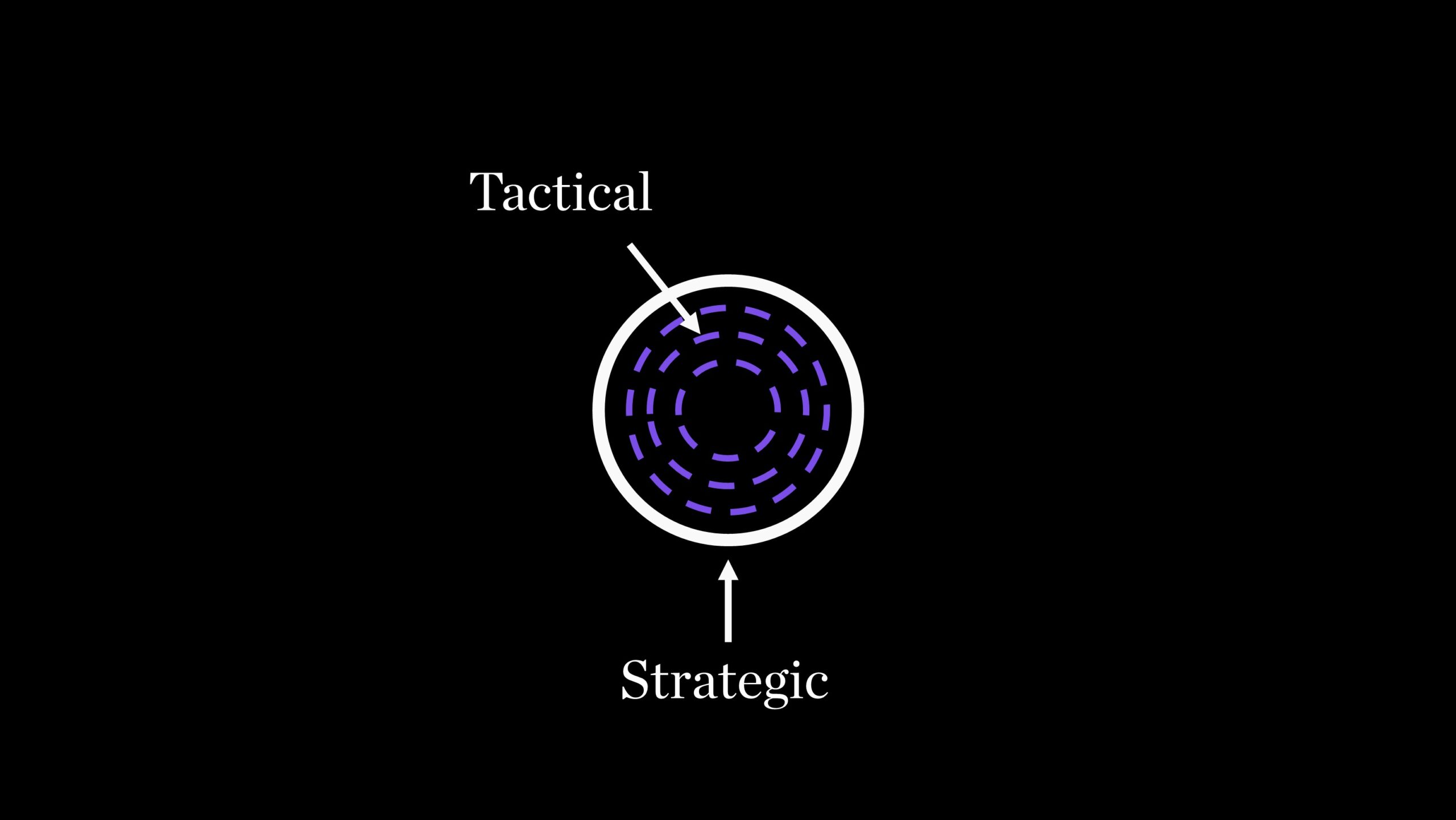Article last updated on January 24, 2022
Strategic thinking is about creating plans and strategies that allow you to achieve goals over time. Tactical thinking is about reacting to events as they happen. The two types of thinking are very different, but both are important.
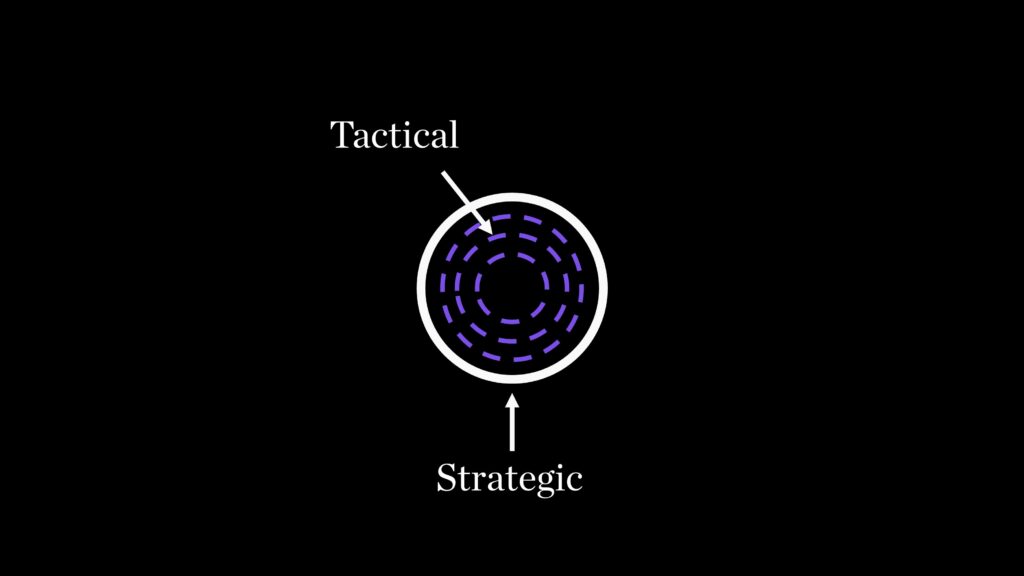
Tactical thinking is great for short-term problems. For example, if you want to get out of a tight situation, tactical thinking can help you escape.
Strategic thinking is good for longer-term problems. For example, if you want to build a successful company, strategic thinking can help you plan ahead.
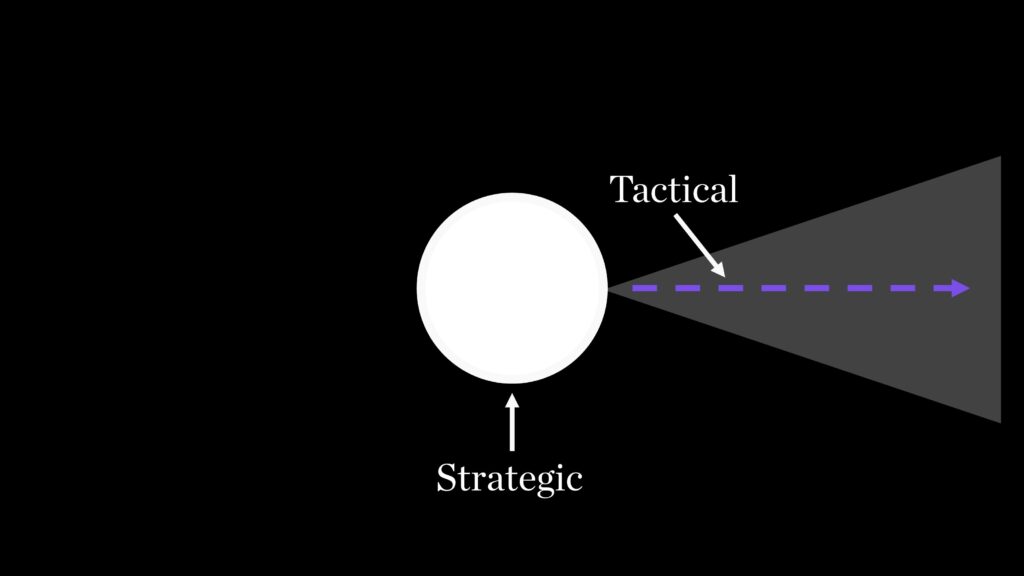
As a growth strategist, I work with online businesses on how to grow their businesses from a strategic and tactical perspective.
In my experience, most people are more like tactical thinkers. They have a clear idea of what they want in the future, and they act accordingly.
However, many business owners don’t know where to start when it comes to planning. This means that they lack strategic thinking skills.
If you are a tactical thinker, then you will need to learn strategic thinking.
If you are a strategic thinker, then you will also need to learn tactical thinking.
So, let’s find out which type of thinker are you…
The Importance of Thinking Differently
Most people think that they are either one or the other. In reality, there is no such thing as being only one kind of thinker.
You can be a tactical thinker at times, and a strategic thinker at others.
This is because your brain works differently depending on the problem you are trying to solve.
For example, if you are trying to remember something, your brain uses a different part of your brain than if you are trying to make an important decision.
In this case, you use the same part of your brain, but you do so in a different way.
If you want to become better at solving problems, you should practice thinking strategically and tactically.
You can be more inclined towards one type of thinking, but you should be able to switch between them.
Strategists look at the big picture. They consider all the factors that might affect the outcome of a project. Tacticians deal with immediate issues. They worry about the details of a situation.
Tacticians can get bogged down in minutiae. And they may not realize the full impact of their actions.
Tactics are sometimes called “bottom-up” thinking. Strategists are more concerned with “top-down” thinking.
The difference between these two types of thinkers is illustrated by the following illustration.
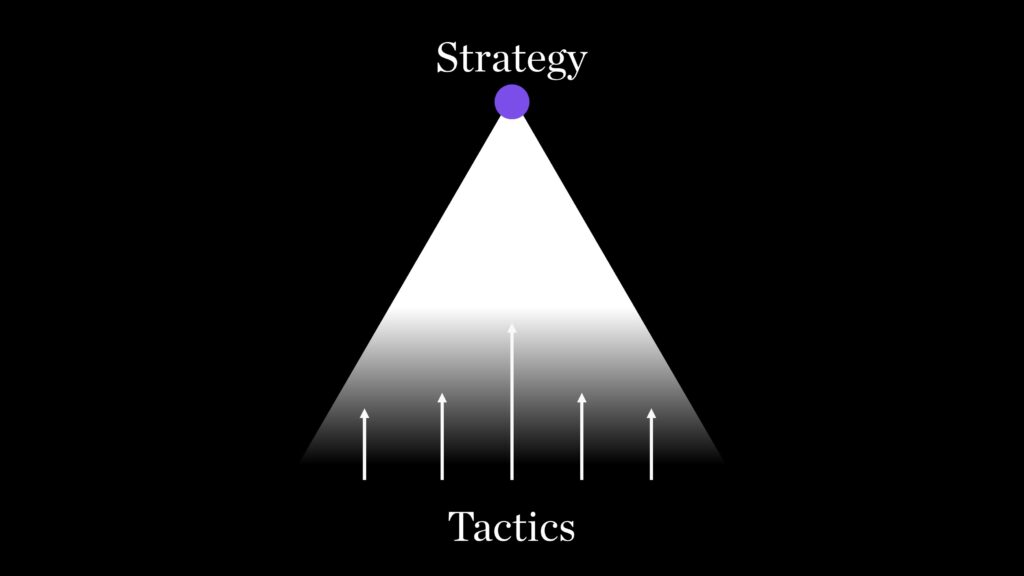
In this diagram, the top represents the strategy level. The bottom represents tactics.
If you want to make the best decisions possible, it’s important that you understand both levels.
If you only knew one side, you would probably make poor choices.
How to switch between tactics and strategy
Switching between tactical and strategic thinking is not difficult. It just requires practice.
Here are some tips to help you develop these skills:
- Be open-minded. When you first try to switch between tactics and strategists, you may feel confused. It is normal to feel this way. However, if you keep practicing, you will eventually get used to switching between the two.
- Focus on the big picture. It is easy to focus on the small details when you are working on a project. But, if you want to succeed, you must focus on the bigger picture.
- Use analogies. Analogies are useful tools to help you understand complex ideas. If you find yourself struggling to understand a concept, look up an analogy.
- Ask questions. Questions are powerful tools to help you gain new insights into a topic. When you ask questions, you force your mind to consider things from multiple perspectives.
- Take notes. Taking notes helps you organize information and makes it easier to access later. Plus, it gives you time to reflect on what you learned.
- Make decisions. Decisions are hard. That’s why we often procrastinate making them. But, once you decide, you can move forward. So, when you face a tough decision, take the time to make sure you have all the facts before you make your choice.
- Reflect. Reflection is another great tool for improving your thinking skills. By reflecting on how you did something, you can improve your next attempt.
What Makes a Good Strategic Thinker
A good strategist has certain traits that make him/her successful.
I could talk about the definition of strategy and having broad, high-level goals, but the point for strategic thinking is to understand that there are three characteristics of a good strategist:
- They are able to see the future. Strategists are able to predict trends and patterns. This allows them to plan ahead and avoid surprises.
- They are able to create plans. Strategists know how to break down large tasks into smaller ones. And, they know how to fit each step into their overall plan.
- They are able to analyze data. Strategists are skilled at analyzing data and using it to inform their decisions.
Each of these characteristics is extremely valuable, and together they create a well-rounded strategist.
However, I also want to mention that every good strategist must:
- Have a strong understanding of the past. A good strategist knows how to use historical examples to explain current events.
- Understand human behavior. A good strategist understands people and how they think, so he/she can anticipate their actions.
- Know how to communicate effectively. A good strategist can write clearly and concisely. He/she can also speak persuasively in meetings.
- Have creativity. Creativity is the ability to come up with new ideas. This means that you don’t always have to follow the rules. Instead, you can create your own unique solutions to problems.
- Have a flexible approach. Flexibility allows you to adapt to changing situations. For example, if you need to change your plan, you can easily do so.
- Have unshakable persistence. Persistence is the willingness to work through challenges until you reach your goal. This trait is especially important because many times, you will encounter setbacks along the way.
How to become a better strategic thinker
You can become a better strategic thinker by always asking yourself a simple question: “Why?” Why does this matter? “
This question will help you look at things from different perspectives. It will allow you to consider more options than just those presented to you.
And, most importantly, it will help you identify any biases you may have. Bias is an unconscious tendency to favor one option over others. When you recognize your bias, you can try to overcome it.
To become a better strategic thinker, remember these tips:
- Understand the basics of strategy. Read books and articles about strategy. Ask other strategists about their techniques.
- Use the scientific method. The scientific method is a systematic process used by scientists to test theories. It includes gathering evidence, formulating a hypothesis, testing this theory, and then repeating the cycle until you find the answer. Apply this same methodology to your life.
- Practice visualization. Visualization helps you imagine what would happen if you were to act differently. Imagine yourself doing things in different ways. What happens? How does it feel? Why might you choose one path over another?
- Reflect on your strengths and weaknesses. Identify your strengths and weaknesses. Then, practice developing strategies to overcome your weaknesses.
- Be open minded. Don’t be afraid to try something new. If you aren’t sure whether or not it will work, just give it a shot!
The importance of being strategic
Strategic thinking is critical for success. Without it, you won’t be able to accomplish anything. In fact, without it, you’ll never get anywhere.
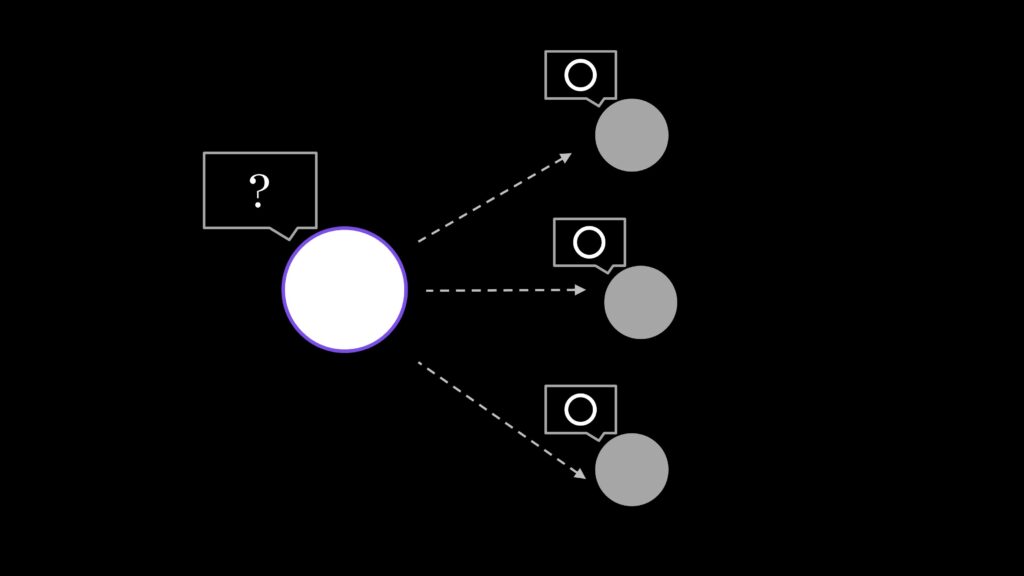
Strategic planning is the foundation of all successful businesses. And, it’s essential for every person who wants to achieve their goals.
In business, a good strategic thinker will be able to make decisions quickly and accurately. They will know when to go ahead with projects and when to back off.
They are also likely to think creatively. This means they will be able to come up with new approaches to old problems.
In personal relationships, a good strategic thinker is someone who knows how to balance his or her needs with those of others. A good strategist will be able to see both sides of an issue before making a decision.
A great strategic thinker has a strong sense of self-awareness. This means he or she understands his or her own strengths and limitations.
It is important that you develop the ability to be strategic. Otherwise, you’ll end up wasting time and money trying to do things that don’t work.
Examples of strategic thinkers
I could cite dozens of examples of people who are considered to be great strategic thinkers. But I’m going to share just a handful of things you should pay attention to.
These individuals demonstrate many characteristics of a strategic thinker (they also demonstrate tactical characteristics, but strategic ones are more dominant).
- Steve Jobs was known as a brilliant visionary. He created products like the Macintosh computer and the iPod. These products changed the way we use computers and listen to music.
- Henry Ford was a master at marketing. His cars were so well designed that consumers couldn’t help but buy them.
- Thomas Edison invented the light bulb, the phonograph, and the motion picture camera. He was also a prolific inventor.
- Walt Disney was a master storyteller. He produced some of the most memorable movies ever made.
- Warren Buffett is famous for investing wisely. He bought companies like Coca Cola and American Express. Today, these investments have grown into multi-billion dollar enterprises.
- Bill Gates is best known for creating Microsoft Windows. However, he also founded the company that developed DOS (the operating system for IBM PCs).
- Elon Musk is a serial entrepreneur. He cofounded PayPal, Zip2, and SpaceX.
When you zoom out and think about it, what pattern emerges from this list? It seems clear that there are certain traits associated with strategic thinkers.
For example, they tend to be creative. They are also willing to take risks. They are often innovative.
And they are usually thinking very long-term.
What Makes a Good Tactic Thinker
While a strategic thinker is focused on the future, a tactical thinker focuses on the present.
This doesn’t mean that tacticians aren’t concerned about the future. On the contrary, they’re always looking toward the future. But their focus is different than that of strategists.
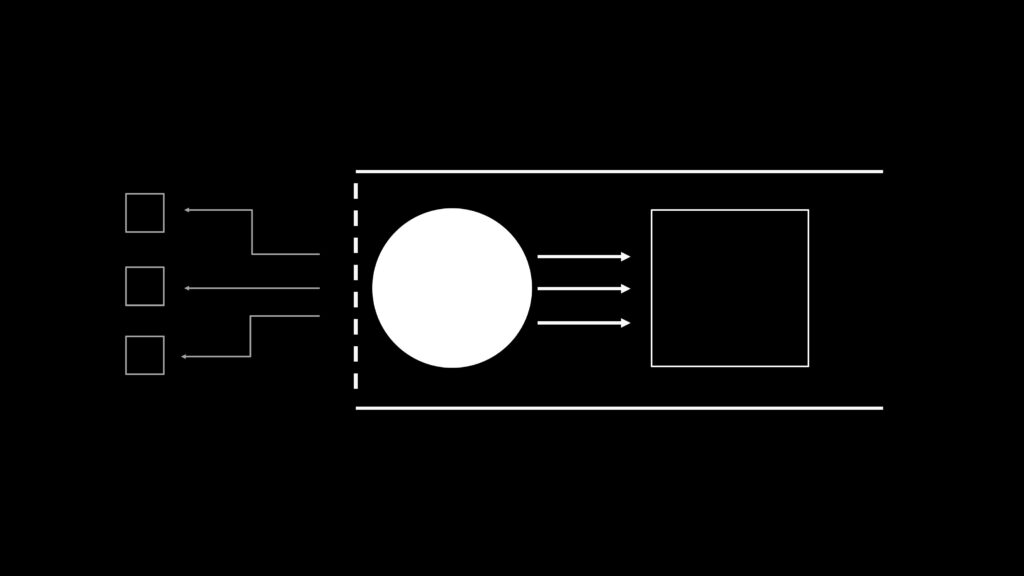
Three characteristics of a good tactical thinker are:
- They are decisive. Which means they can make quick decisions despite having limited information (that’s why strategy is important to provide the information).
- They are action oriented. Tactical thinkers are more comfortable taking action than analyzing options.
- They are not afraid to fail. If something isn’t working, they won’t hesitate to try something new.
In contrast, strategists prefer to analyze problems before deciding on solutions.
Each of these characteristics is extremely valuable, and together they create a well-rounded tactician.
However, I also want to mention that every good tactician must:
- Have an excellent understanding of the business environment
- Be able to communicate effectively
- Be able to persuade others
Without these skills, it will be difficult to become a successful tactician.
How to become a better tactical thinker
You can become a better tactical thinker by asking yourself a question: “What’s next?”
This question will help you avoid getting stuck in a rut. When you ask yourself, “what’s next?”, you’ll be forced to think about your options, and when you consider all of your options, you’ll be able to come up with the right one.
Here are five tips to help you become a better tactician:
- Learn how to manage your time. This includes knowing when to say “no”.
- Be aware of your strengths and weaknesses.
- Take calculated risks.
- Focus on learning rather than memorizing facts.
- Practice empathy.
Even though some of these tips sound obvious, many people don’t follow them. In fact, most people spend too much time focusing on things that are less important.
The key is balance. Try to strike a healthy balance between being tactical and strategic.
Most people lean on what is easiest for them to do.
The importance of being tactical
A tactician has to understand that their job is to execute strategies.
They have to be ready to act quickly without spending too much time planning.
Without a tactician, nothing would ever get done.
Think about it. How could you accomplish anything if you spent days planning everything out?
That’s why tacticians need to be decisive.
To grow our business, we need to take action. Action is vital, and only a tactician can do it.
Examples of tactical thinkers
There are a lot of tactical thinkers who are very successful. Most of them are not famous because they are often right hands for strategists.
Here is one example of a tactician that you can easily relate to and understand.
Steve Wozniak started Apple Computer with Steve Jobs in 1976. Wozniak was known as a technical genius. However, he was never interested in marketing.
He didn’t like talking to customers. He preferred to work on his computer projects. He had no interest in selling his products. Instead, he wanted to build cool stuff.
Do you see a pattern here? Wozniak wanted to build cool stuff, while Jobs wanted to sell cool stuff.
Wozniak wasn’t a strategist. He was more focused on building cool stuff.
Jobs was a strategist. He knew exactly what he needed to do to make money.
And this is where they became partners. They both understood each other’s strengths and weaknesses.
Explanation of Strategy versus Tactics in Business
The distinction between strategy and tactics is similar to the difference between an executive and a manager.
An executive is responsible for implementing a company’s overall strategy. A manager is responsible for executing those plans.
When thinking about strategy vs. tactics, think about the following questions:
- What type of leader do I want to lead my team?
- Do I prefer to focus on execution or do I prefer to focus on strategy?
- Do I prefer to plan ahead or do I prefer to react?
- Am I good at managing people or am I good at managing myself?
- Do I like to talk to customers or do I prefer to stay behind my desk?
- Am I better off working alone or do I thrive when surrounded by others?
- Do I enjoy doing research and analyze or do I prefer to take action?
A high-level strategy involves long-term goals. It includes big picture decisions. It also requires vision.
In contrast, high-level tactics involve short-term objectives. It focuses on immediate needs. It is all about getting results now.
Long-term success comes from focusing on the future and only then taking action.
Strategy is about creating a vision and tactics are about achieving that vision.
If you are a strategic thinker, your goal is to create a vision and set a direction for your business.
You will need to define the end result and then figure out how to achieve it. An overarching plan will help you get there.
I would not think of this as Strategy vs. Tactics but rather in terms of Strategy Plus Tactics, because you can see that there is a synergy between the two.
A great example of this synergy is the story of Apple computers, which I mentioned earlier.
You see, tactics without strategy is just a recipe for disaster. The same goes for strategy without tactics. Both are required to be successful. A strong strategy plus strong tactics equals a winning combination.
Which one are you?
If you are a tactical person, awesome! You know exactly what lights you up, and you have the skills to execute them.
However, if you’re a strategic thinker, you have a fantastic insight on where your focus should be, and without you, nothing would ever happen.
So which one are you?
Conclusion
All in all, my stance is that we should always strive to merge the best of both worlds. We should recognize our strengths and weaknesses.
We should use them to complement one another. And we should leverage them together to become stronger.
A marketing strategy can only be executed if you have a solid understanding of marketing tactics.
Marketing tactics can only be recognized if you have a clear understanding of marketing strategy.
I hope you have a clear understanding of the distinctions between strategy and tactics and how essential it is to pay attention to both.


